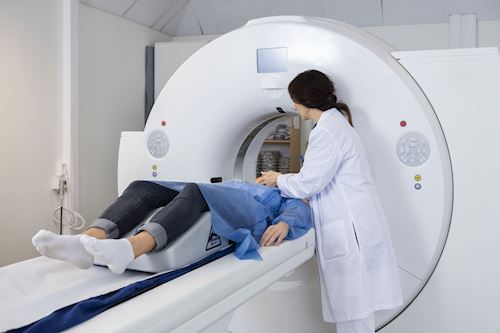1. "Meningitis is an infection of the fluid of a person's spinal cord and the fluid that surrounds the brain. People sometimes refer to it as spinal meningitis. Meningitis is usually caused by a viral or bacterial infection. Knowing whether meningitis is caused by a virus or bacterium is important because the severity of illness and the treatment differ. Viral meningitis is generally less severe and resolves without specific treatment, while bacterial meningitis can be quite severe and may result in brain damage, hearing loss, or learning disability" (CDC Meningococcal Disease).
2. "High fever, headache, and stiff neck are common symptoms of meningitis in anyone over the age of 2 years. These symptoms can develop over several hours, or they may take 1 to 2 days. Other symptoms may include nausea, vomiting, discomfort looking into bright lights, confusion, and sleepiness. As the disease progresses, patients of any age may have seizures" (CDC Meningococcal Disease). In this case, the patient showed the effects of a meningococcal septicemia due to the petechial rash present on examination.
 3. A diagnosis was made from the CBC and spinal fluid analysis. In bacterial meningitis, the WBC is elevated. The spinal fluid showed a gram-negative diplococcus bacteria, an elevated protein level, and decreased glucose level, indicative of bacterial meningitis. The presence of cellular material and bacteria in the spinal fluid increases the protein level. The bacteria are utilizing glucose as an energy source, therefore the total spinal fluid glucose is decreased. An XRay and CAT scan were ordered to detect the pressure on the brain from meningitis. Increased cranial pressure can be very dangerous, leading to seizures and brain damage.
3. A diagnosis was made from the CBC and spinal fluid analysis. In bacterial meningitis, the WBC is elevated. The spinal fluid showed a gram-negative diplococcus bacteria, an elevated protein level, and decreased glucose level, indicative of bacterial meningitis. The presence of cellular material and bacteria in the spinal fluid increases the protein level. The bacteria are utilizing glucose as an energy source, therefore the total spinal fluid glucose is decreased. An XRay and CAT scan were ordered to detect the pressure on the brain from meningitis. Increased cranial pressure can be very dangerous, leading to seizures and brain damage.
4. "Urgent treatment with antibiotics is essential for someone with bacterial meningitis. The sooner someone with bacterial meningitis is diagnosed and treated, the greater chance there is they will make a full recovery" (Meningitis Foundation of America). Appropriate treatment with antibiotics reduces the risk of dying to below 15%. Anti-seizure medication (steroids) is used to alleviate intracranial pressure.
5. Meningococcal meningitis occurs predominantly in males. Epidemics occur in about 10-year cycles. Most cases of meningitis are isolated and not related to other cases. "Bacterial meningitis is fairly uncommon but can be extremely serious. It is fatal in one in 10 cases and one in 7 survivors is left with a severe handicap, such as deafness or brain injury" (Meningitis Foundation of America).
6. There are vaccines against many of the strains of bacteria that cause meningitis. The Hib vaccine has been very effective in reducing the rate of childhood meningitis. The pneumococcal vaccine works against the strain of bacteria causing meningitis primarily in elderly people. Other vaccines may be utilized to control outbreaks. Since meningitis is a reportable, communicable disease, the medical teams must promptly notify state and county public health officials. These individuals then follow the protocols for notifying persons who may have had direct contact with the patient.
7. Many healthcare workers interacted, in this case, to diagnose and effectively treat the patient. Physicians ordered key tests, made the diagnosis, and ordered treatment. Nursing personnel worked around the clock monitoring vital signs, giving intravenous antibiotics and fluids, and administering steroid medications. Medical laboratory technologists provided key information for the diagnosis in the form of a CBC, and spinal fluid results. Radiologic technologists performed Xrays and a CAT scan to detect the level of intracranial pressure. Radiologists read and interpreted the images. Public Health officials played a key role in containing a communicable disease. They alerted individuals that had been in close contact with the patient to watch for symptoms that might indicate meningitis. These individuals were advised to notify a physician immediately at the appearance of any possible symptoms.
